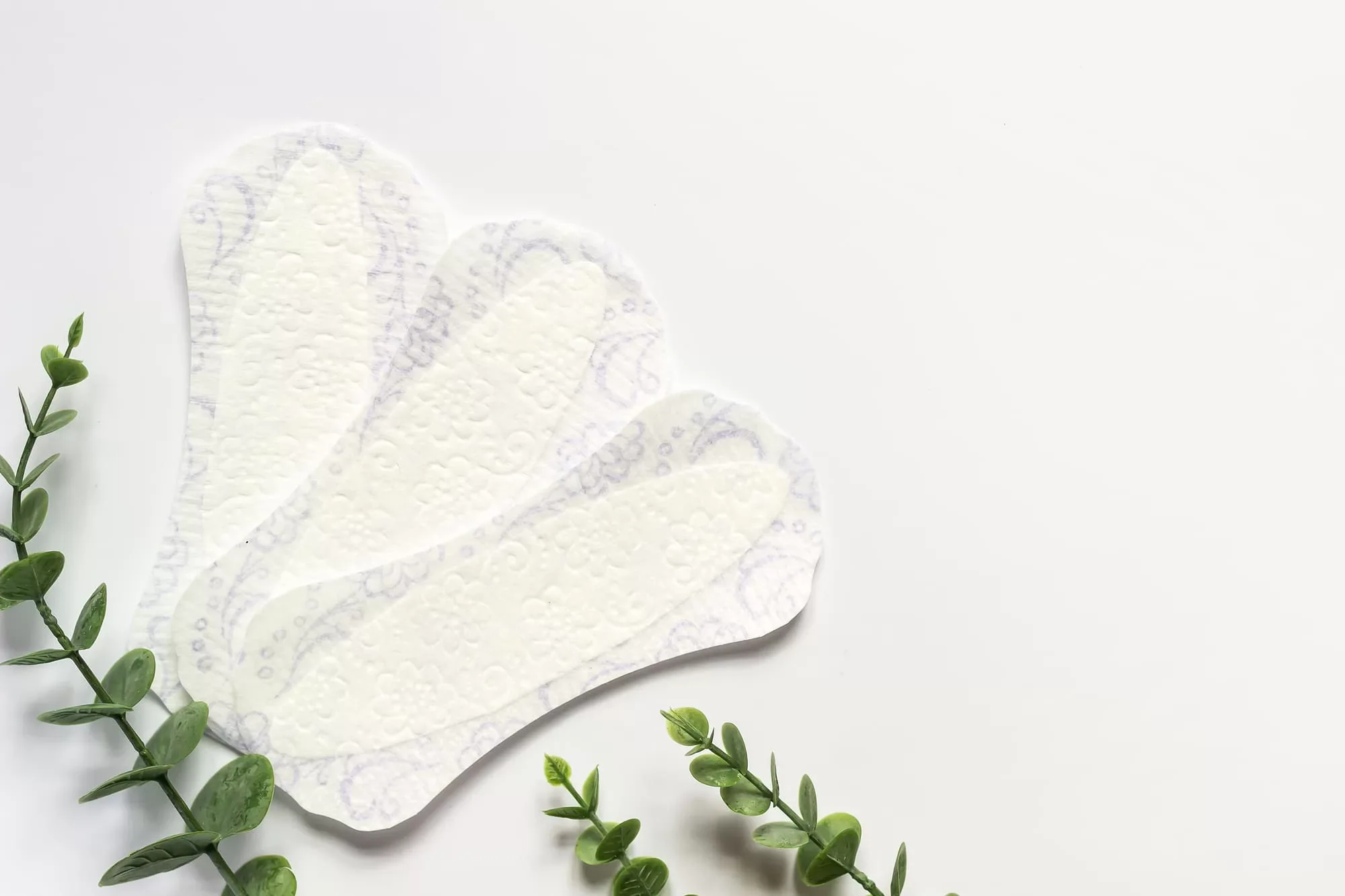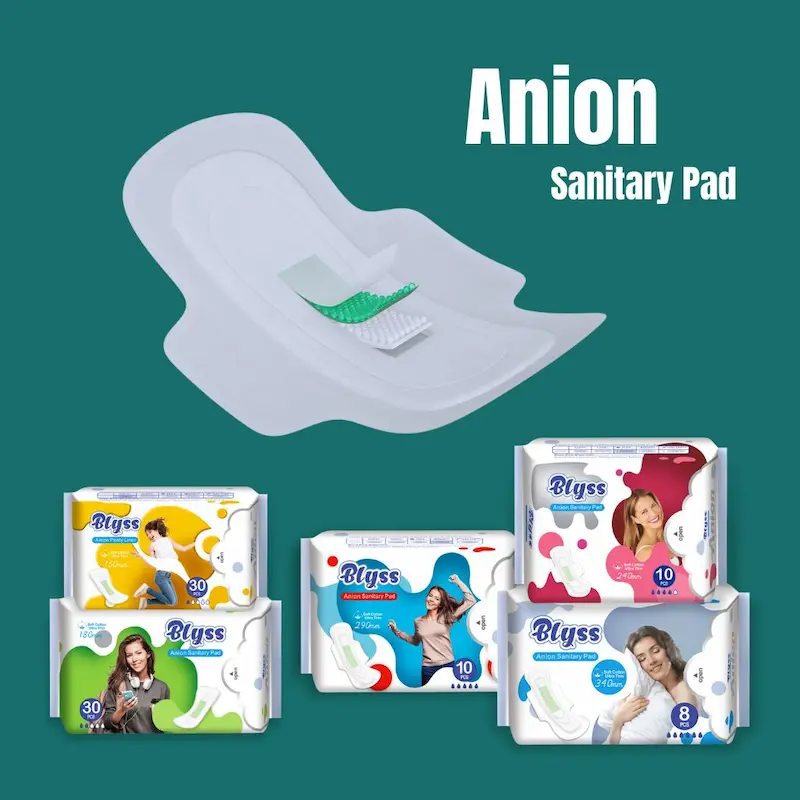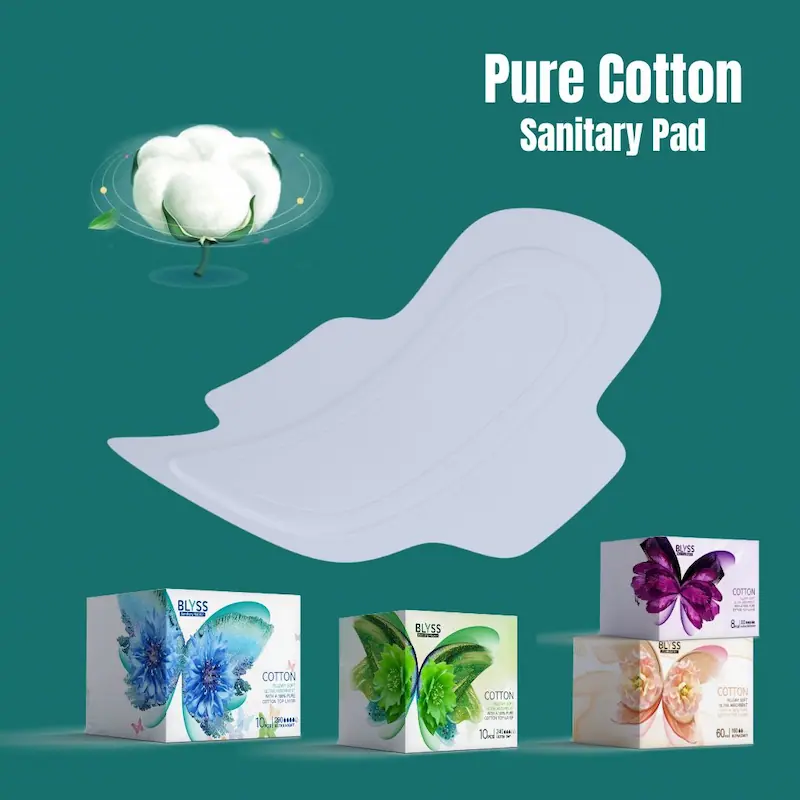Overview of the importance of choosing the right pad:
Choosing the right menstrual pad is essential for a comfortable and confident period experience. Here’s why it matters:
- Comfort: Menstrual pads should provide a comfortable experience throughout the day, allowing you to move freely without any discomfort or irritation. Finding the right fit and thickness ensures optimal comfort.
- Protection: A well-fitting pad should effectively absorb menstrual flow, preventing leaks and keeping you feeling fresh and confident. The right pad will provide the level of absorption needed for your flow.
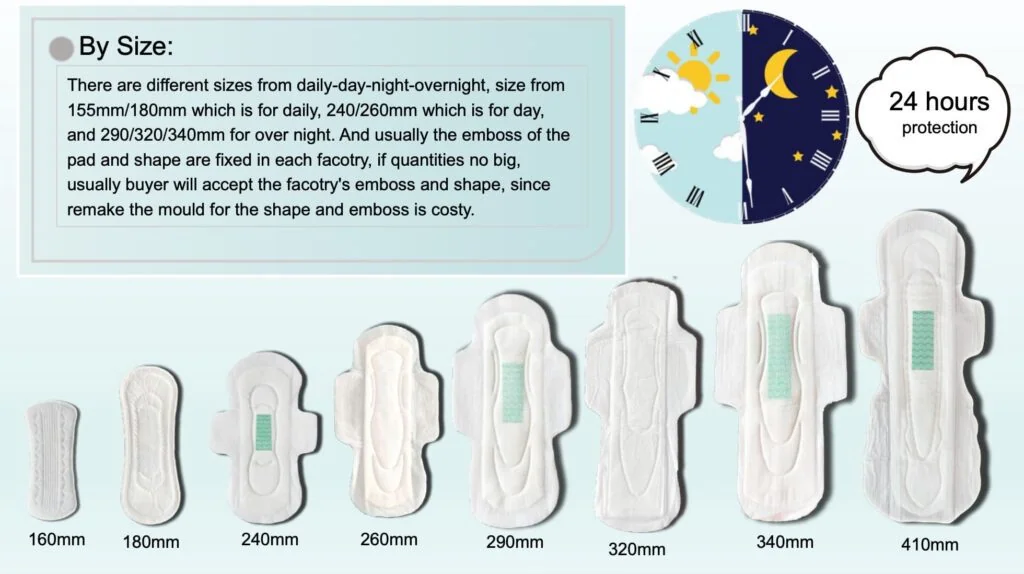
Understanding Pad Thickness
The thickness of a pad is an important factor to consider when choosing the right one for you. The thickness directly influences both comfort and absorption capabilities. Let’s take a closer look:
Ultra-Thin Pads
Perfect for light to moderate flow, ultra-thin pads provide discreet and comfortable protection. They are thin, lightweight, and designed to keep you feeling dry and confident throughout the day.
Regular Thickness Pads
Ideal for moderate flow, regular thickness pads offer a balance between comfort and absorption. They provide moderate coverage and are suitable for everyday use.
Maxi Pads
These thicker pads are designed for heavy flow days. With their enhanced absorbency, they offer maximum protection against leaks and come in various lengths for added coverage.
Stay tuned as we explore how to choose the right absorbency level and delve into pad shapes, different styles, and materials used in menstrual pads, ensuring you make informed choices for your menstrual hygiene needs.
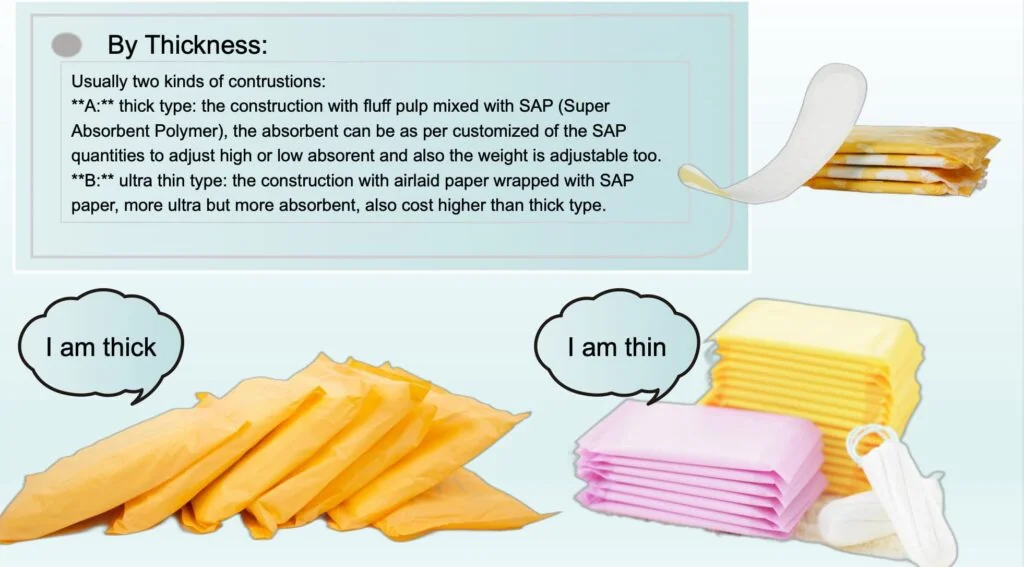
Choosing the Right Absorbency
Selecting a pad based on your flow level is crucial to ensure adequate protection. Here’s a guide to help you determine the absorbency level you need:
Light Flow
For days with minimal flow, choose pads with a light absorbency level. These pads are usually thin and offer comfortable protection without feeling bulky. They’re perfect for the beginning or end of your period when the flow is lighter.
Moderate Flow
If your flow is average or moderate, opt for pads with a medium absorbency level. These provide reliable leak protection and ensure you stay comfortable throughout the day. They strike a great balance between absorption and comfort.
Heavy Flow
During heavy flow days, choose pads with a high absorbency level. These pads are designed to handle an increased flow and provide maximum protection. They have a higher capacity for absorbing menstrual flow, keeping you feeling secure and preventing leaks.
Remember, it’s essential to change your pad regularly regardless of its absorbency level to maintain good hygiene and prevent the risk of leaks or discomfort.
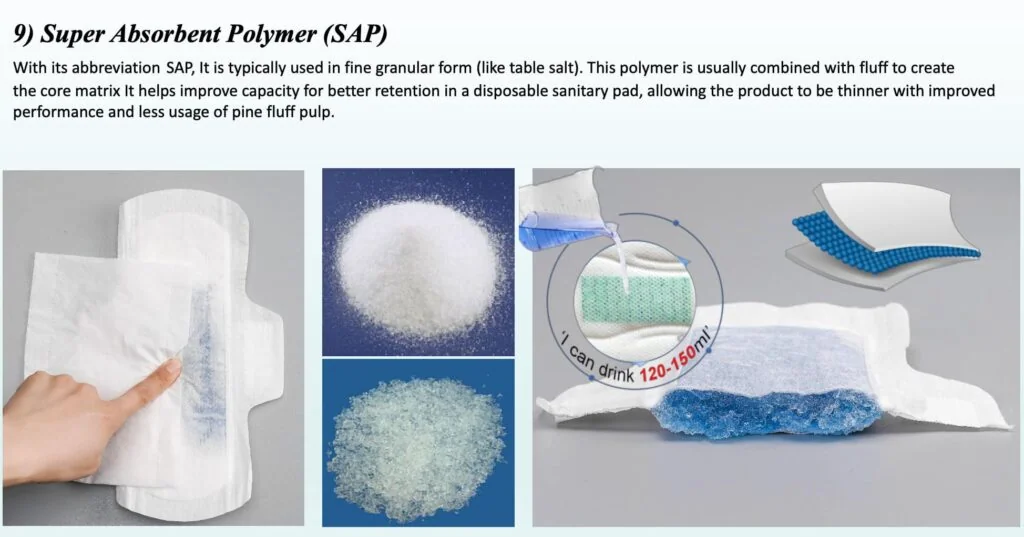
How to Correctly Use a Sanitary Pad
- Initial Preparation: Always start by washing your hands thoroughly. This step is vital to prevent the transfer of germs and bacteria to the sanitary pad.
- Pad Removal from Packaging: Carefully remove the sanitary pad from its packaging. Identify any special features like loops or wings.
- Pad Placement: The pad should be placed in the center of the underwear with the adhesive side down. For looped pads, secure the loops around the sides of the underwear.
- Adjustment for Comfort: Ensure the pad is comfortably centered. The front of the pad should align with the front of your body, and the back should align with the back.
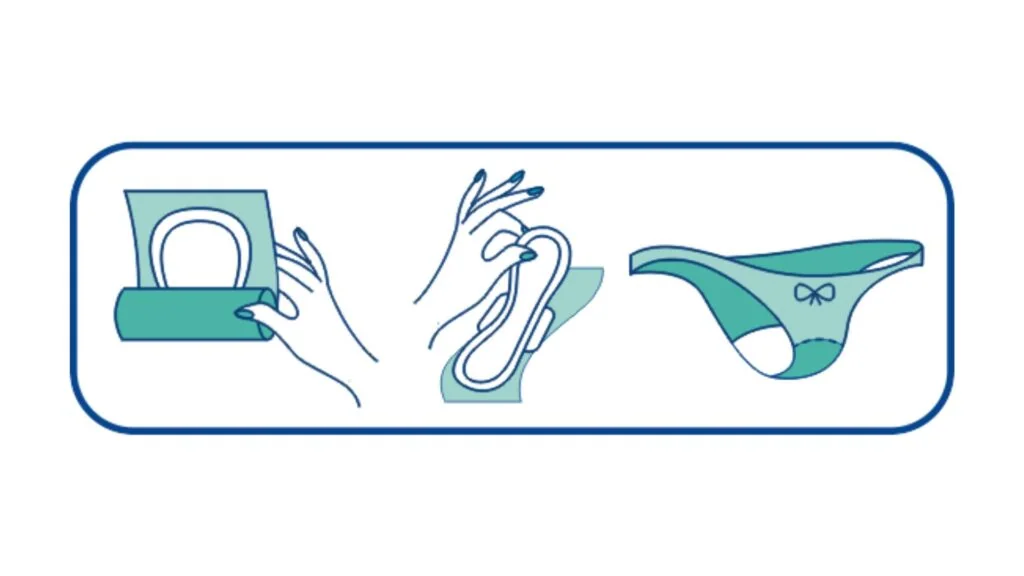
Preventing Leakage
To effectively prevent leakage, it is crucial to position the pad correctly. It should cover the entire expected bleeding area and be pressed firmly into place. Regularly changing the pad, every 3-4 hours or as needed, is also vital to prevent overflow and reduce leakage risk. Wearing snug-fitting underwear helps keep the pad in place, providing an additional leakage barrier. Alternatives like menstrual cups or period panties can be considered for added protection.
Maintaining Hygiene
Keeping the genital area clean is crucial while using sanitary pads. After removing the used pad, clean the area with gentle wipes or a damp cloth. This step is critical to avoid any irritation or infections.
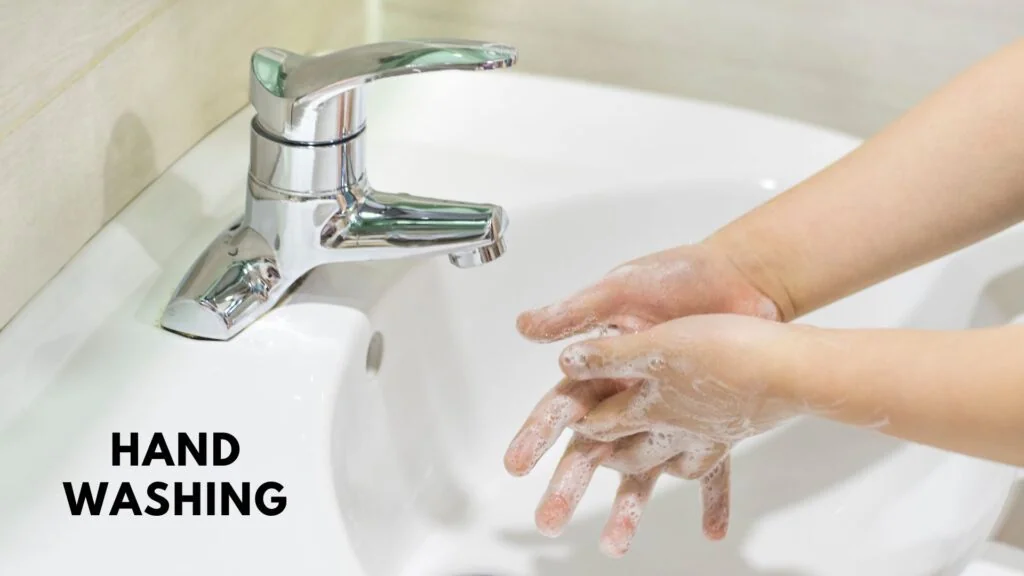
Importance of Regularly Changing Sanitary Pads
Changing your sanitary pad every few hours is crucial, especially during heavy flow days. It is generally advised to change pads every 3-4 hours. However, individual needs may vary, and you should change the pad sooner if it’s full or you feel discomfort. Regular changing not only ensures hygiene but also prevents odors and the risk of infections.
Proper Disposal of Used Sanitary Pads
Disposing of sanitary pads correctly is as important as using them correctly. Used pads should be wrapped in toilet paper or their original packaging and disposed of in a bin. Do not flush pads down the toilet as they can cause blockages and environmental pollution.
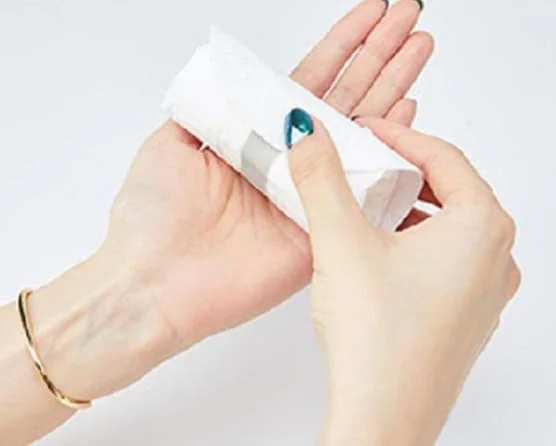
Conclusion: Ensuring Comfort and Hygiene
Sanitary pads, when used and disposed of correctly, provide a reliable and hygienic solution during menstruation. Understanding the types of pads available, using them correctly, and maintaining good hygiene practices are key to a comfortable and stress-free menstrual experience. Always remember to choose a pad that suits your flow, change it regularly, and dispose of it responsibly.

